Beyond the Frame 52/
Remembering Françoise Demulder—the first woman to win the World Press Photo contest—and looking back at the world as it was in 1977.
Homeward bound
I’m heading to sunny old England for a couple of weeks. I shall be attending the fabled Sherborne Travel Writing Festival. At last year’s event I had a brief but memorable encounter with one of my heroes, Sir Don McCullin. But that’s a story for another occasion.
First, we’re heading to Vietnam and travelling back almost 50 years.
Sir Don McCullin
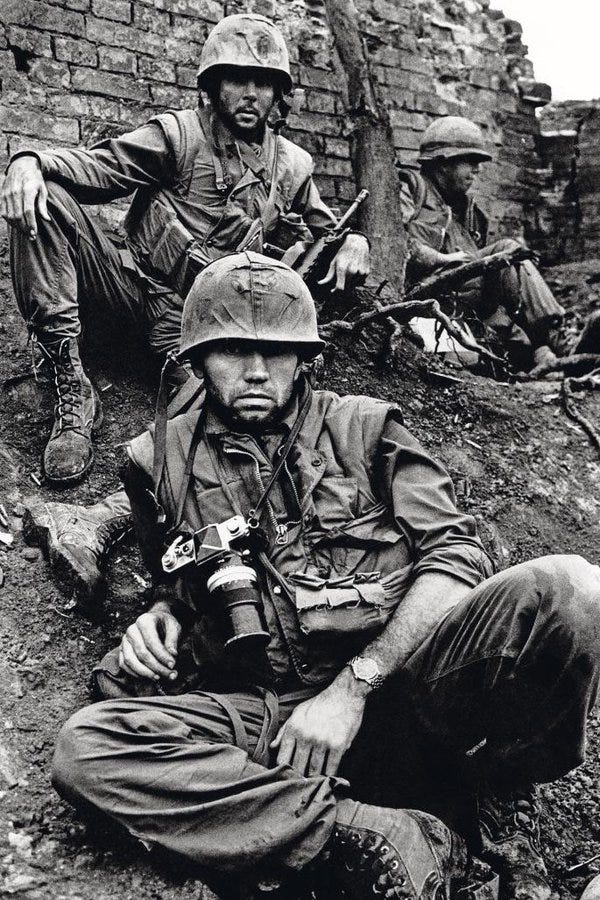
McCullin is arguably the most acclaimed British photojournalist of the twentieth century. Many of his photographs from war-torn regions have become grimly iconic, not least his stark, dark images from the battle of Hue in Vietnam.
In 2018, Anthony Lloyd from The Times went in search of some of the Marines photographed by McCullin during that hellish battle. The original Times article is here and you can read a non-paywalled copy here.
McCullin’s photo essay of the Lebanese Civil War, made for the Sunday Times in 1976, won first prize in the News Story category of the World Press Photo contest the following year.
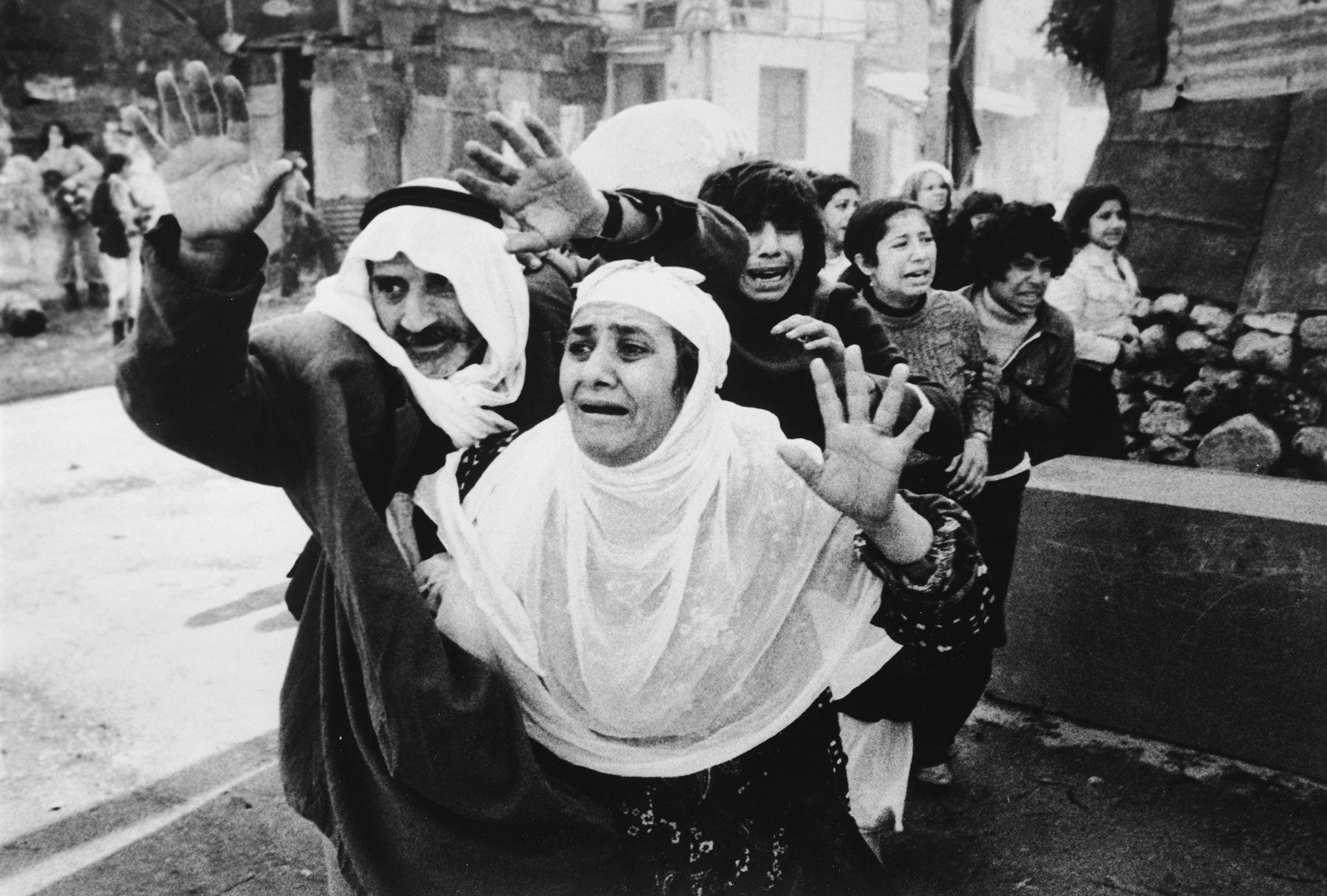
In Beirut at the same time as McCullin was French photojournalist Françoise Demulder (Fifi). One of her images of the conflict was selected as the overall winner of the World Press Photo contest in 1977. It was the first time the contest had been won by a woman.
Françoise Demulder—First woman to win World Press Photo
Karantina
A Palestinian woman, arms outstretched, stands before a masked gunman in military fatigues. The backdrop is chaos: smoke curling from burning buildings, the aftermath of sudden violence. This was Karantina, 1976. An informal neighbourhood, home to Palestinian refugees, razed in hours by the Phalange militia. Hundreds were killed.
The Karantina massacre was one of the many violent incidents marking the first years of the Lebanese civil war.
This photo by Françoise Demulder was the overall winner of the 1977 World Press Photo contest.
1977 World Press Photo
Looking at the other winning images from the 1977 World Press Photo contest is fascinating and shocking in equal measure.
You might not be surprised to see that the photographs are almost exclusively black and white. The only colour photo is an appropriately futuristic image of a steel sculpture in the Algerian desert.
One rarely finds uplifting images in the annual World Press Photo contest. It is a sorry fact that the stories which make headlines are most likely to show wars, poverty, death and destruction. Sad but essential reflections of the worst of human nature. The 1977 awards are especially grim reminders of how the world looked nearly fifty years ago.
South Africa
A photo story showing life in apartheid South Africa, nearly 15 years before Nelson Mandela was released from prison, provides a stark account of life under a regime that codified racism into every facet of public life.
Portraits
There’s an unsettling portrait of Charles Manson, and, in a welcome lighter moment, a perfectly-timed picture of Britain’s Princess Anne at the ’76 Olympic Games in Montreal.
Thailand
An image made outside Thammasat University in Thailand, during one of the country’s many bouts of civil unrest and political upheaval, is too disturbing to share here and I doubt very much if it would be published anywhere these days.
Warning! The link is here if you’re really interested but be aware, it’s not an image that you’re likely to forget in a hurry, no matter how much you might wish to.
Reflecting on 1977
Looking through these images from almost fifty years ago provides important context. They illustrate the world in which Françoise Demulder was working. It was a world in which, arguably, working as a photojournalist required even greater determination and self-sacrifice than it does today.
Don McCullin has often spoken about the ghostly memories that continue to haunt him to this day. There’s no doubt that being a conflict photographer in the latter part of the 20th century was not a job for the timid or uncertain. By all accounts, Françoise Demulder was neither.
Fifi
Françoise, more commonly known as “Fifi” (a nickname reportedly coined by Palestine Liberation Organisation leader Yasser Arafat), was an independent freelancer. An intrepid photojournalist working at a time when the world of photojournalism was almost exclusively male.
She first made her mark in Vietnam. You might recognise her 1975 photo of a north Vietnamese tank rolling through the gates of the Presidential Palace in Saigon. It was a moment that signified the fall of South Vietnam and the end of the Vietnam war.
Françoise was the only journalist to have gained access to the palace after virtually all foreigners had been evacuated. The photo was published around the world and came to symbolise the American defeat.
Françoise documented conflicts across Southeast Asia and the Middle East. She covered events in Cuba, Pakistan and Ethiopia and her black and white photographs appeared in newspapers and magazines around the world.
“I felt compelled to document how it is always the innocent who suffer, while the powerful get richer and richer.” ~ Françoise Demulder
Fifi died in 2008, aged just 61. She spent the last decade of her life in a wheelchair after a surgical error left her partially paralysed. Despite her success, when she fell ill she was virtually penniless. Friends and colleagues from around the world organised a fund-raising auction of their own photographic prints to help cover her medical bills.
In a bittersweet discovery, I located the remnants of the website that promoted the auction.
The heartfelt introduction bears witness to the affection in which she was held.
“She is who we are, and we are her. As in a collage or a patchwork, we have bits and pieces of time in common, we see the same landscapes, share the same pain and laughter. For those of us journalists who have grown up during the wars of the last thirty years, Françoise’s very existence is our connection, our home meeting place.”
A dozen photos shared by friends and colleagues are pretty much all that are publicly available of Françoise. It’s strange to be reminded how infrequently we used to make photos of each other in our daily lives.
“Françoise Demulder was a remarkable woman, an artist and a witness of our times.” ~ Christine Albanel, French minister of culture
The Françoise Demulder Photography Grant
Each year since 2020 the French Ministry of Culture has awarded two female photojournalists a grant in Françoise’s name. The Françoise Demulder Photography Grant recognises the contribution to photojournalism of women from any nation.
The grant is currently open for submissions and entry is free.
Readers interested in making a submission can download the rules and entry form below.
Previous Winners
The Françoise Demulder Photography Grants were awarded to Sandra Calligaro and Catalina Martin-Chicoin 2024.
Sandra Calligaro
Sandra, who has visited and lived in Afghanistan for more than 15 years, has documented the changes in the country after the American withdrawal in 2021.
 Kabul, Afghanistan. © [Sandra Calligaro](https://www.sandracalligaro.com/index.php/talibans-are-back/)](https://substackcdn.com/image/fetch/$s_!ehPm!,w_2400,c_limit,f_auto,q_auto:good,fl_progressive:steep/https%3A%2F%2Fsubstack-post-media.s3.amazonaws.com%2Fpublic%2Fimages%2F6130dbff-b20f-4384-b4eb-f8185fc37794_903x602.jpeg)
“I am stunned. Even if, in recent years, the alarm signals have intensified. Even if the country was entrenched in a growing insurrection. Even if the "students of religion”—this is the meaning of the word Taliban—were gaining more and more rural districts.
There is perhaps a part of denial at the origin of my reaction. How, with 200 billion dollars swallowed up in the country, can the Afghan state collapse? The sudden return of the religious to Kabul seemed unthinkable to me, of the order of science fiction. Yet they are there, the men in black, the white flags, entering the Afghan capital without the slightest resistance, masters of the country in half a day.” ~ Sandra Calligaro, August 15, 2021 (via Google translate).
Catalina Martin-Chico
Catalina’s work in Yemen, documenting the conflict and attacks on health care workers, won the inaugural ICRC Humanitarian Visa d’or Award.
Her photo essay documenting the lives of Iranian nomads is particularly worth exploring. It gives an intimate and affectionate insight into the daily lives of a group of people we might never otherwise encounter.
If you can make time for a closer look at the work of Sandra and Catalina, you will be well rewarded.
The work continues
I would bet that most readers recognise Sir Don McCullin’s name—and rightly so. I suspect fewer know Françoise Demulder, despite the fact that she worked in the same locations and produced work of equal merit that was published just as widely.
Perhaps it’s because Fifi died too young. Maybe it’s because she’s a woman. Perhaps both.
Whatever the reason, I’m pleased to see that her home nation continues to recognise her contribution to photojournalism and is encouraging more women to follow her example.
In the age of Artificial Intelligence and citizen journalism, it’s somewhat reassuring to see that photojournalism continues to be recognised as a vital endeavour worthy of our attention and encouragement.
Packing
Right, I ought to be packing for my flight to Blighty.
I shall, of course, leave space in my luggage for supplies of Marmite, HP Sauce and Branston Pickle.
British cuisine might be as uninspiring as the British weather but if there’s one thing we Brits are good at, it’s making gloopy, brown condiments. 😬
Until next time, go well.
Directory: Beyond the Frame newsletter archive.
Resources: Recommended books, films, gear, media etc.
Beyond the Frame 51/
Six Degrees of David Hurn. From photographer David Hurn to Kevin Bacon (yes, really) — a photographic trail involving readers reading, and the photographers who are captivated by them.




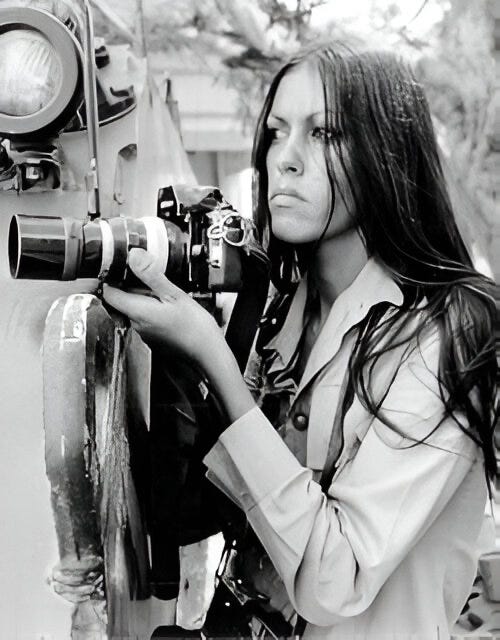

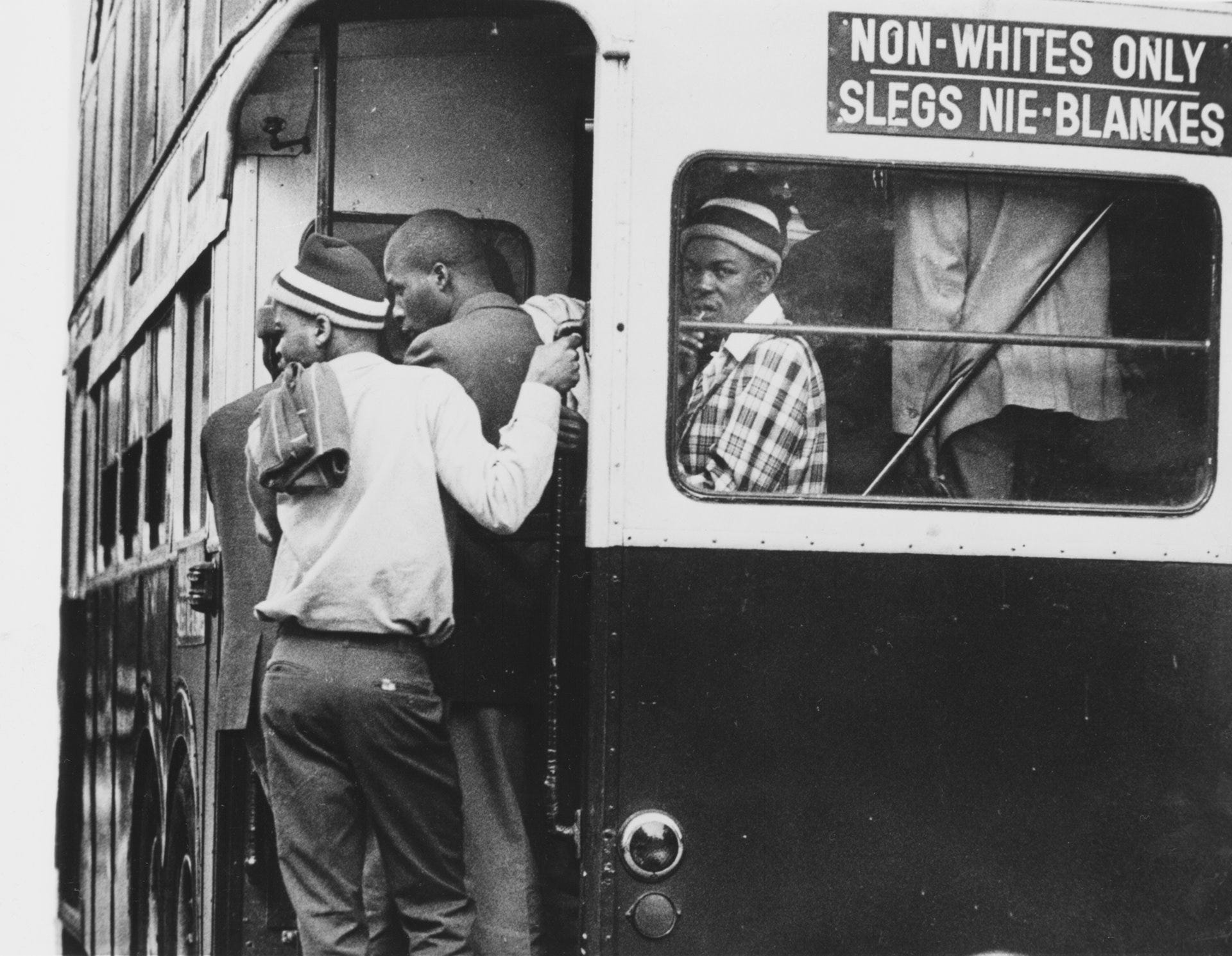
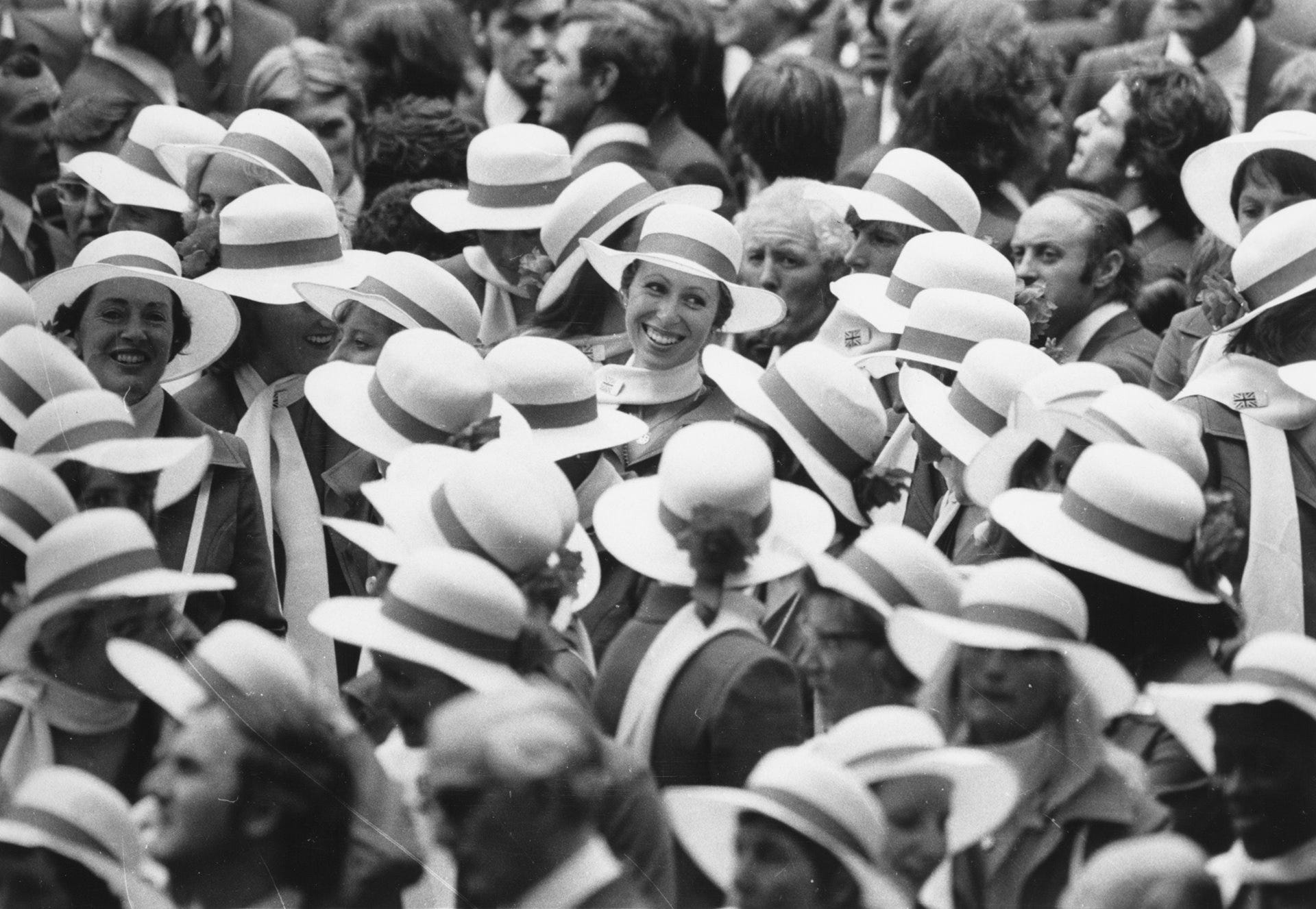
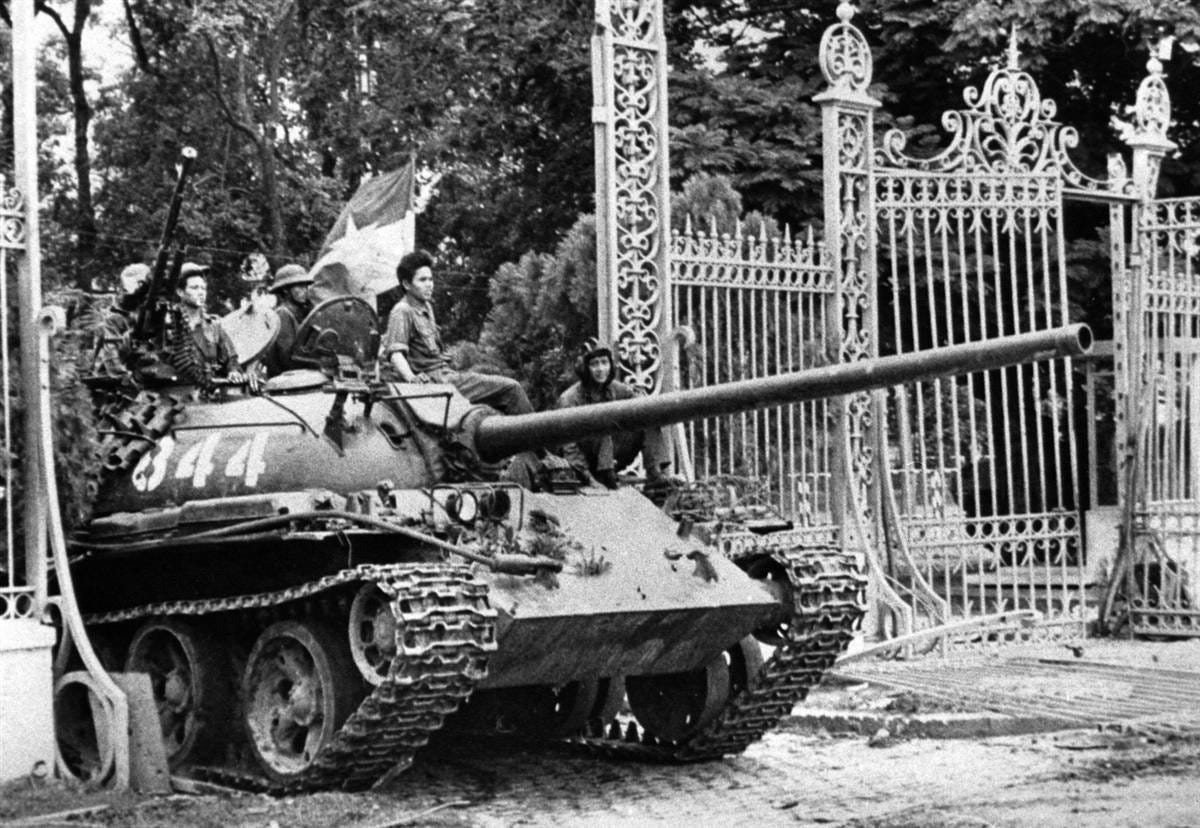
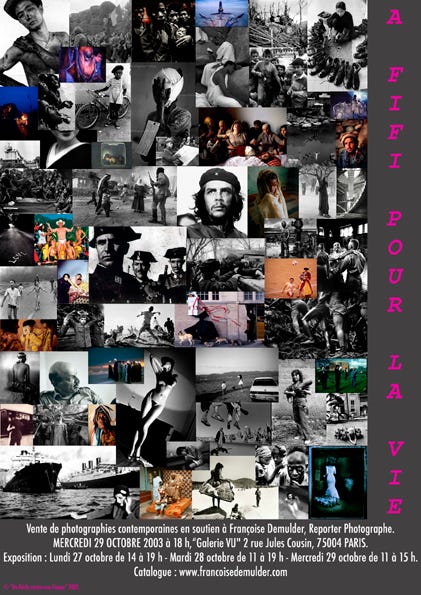


 © [Catalina Martin-Chico](http://www.catalinamartinchico.com/the-last-nomades-of-iran)](https://substackcdn.com/image/fetch/$s_!Rchn!,w_2400,c_limit,f_auto,q_auto:good,fl_progressive:steep/https%3A%2F%2Fsubstack-post-media.s3.amazonaws.com%2Fpublic%2Fimages%2F6f4b739d-2fd2-4c82-994f-8d12020fc678_2000x1333.jpeg)
 © [Catalina Martin-Chico](http://www.catalinamartinchico.com/the-last-nomades-of-iran)](https://substackcdn.com/image/fetch/$s_!pX6w!,w_2400,c_limit,f_auto,q_auto:good,fl_progressive:steep/https%3A%2F%2Fsubstack-post-media.s3.amazonaws.com%2Fpublic%2Fimages%2F6c69c194-a585-4387-b16c-ad71473a4057_2000x1333.jpeg)

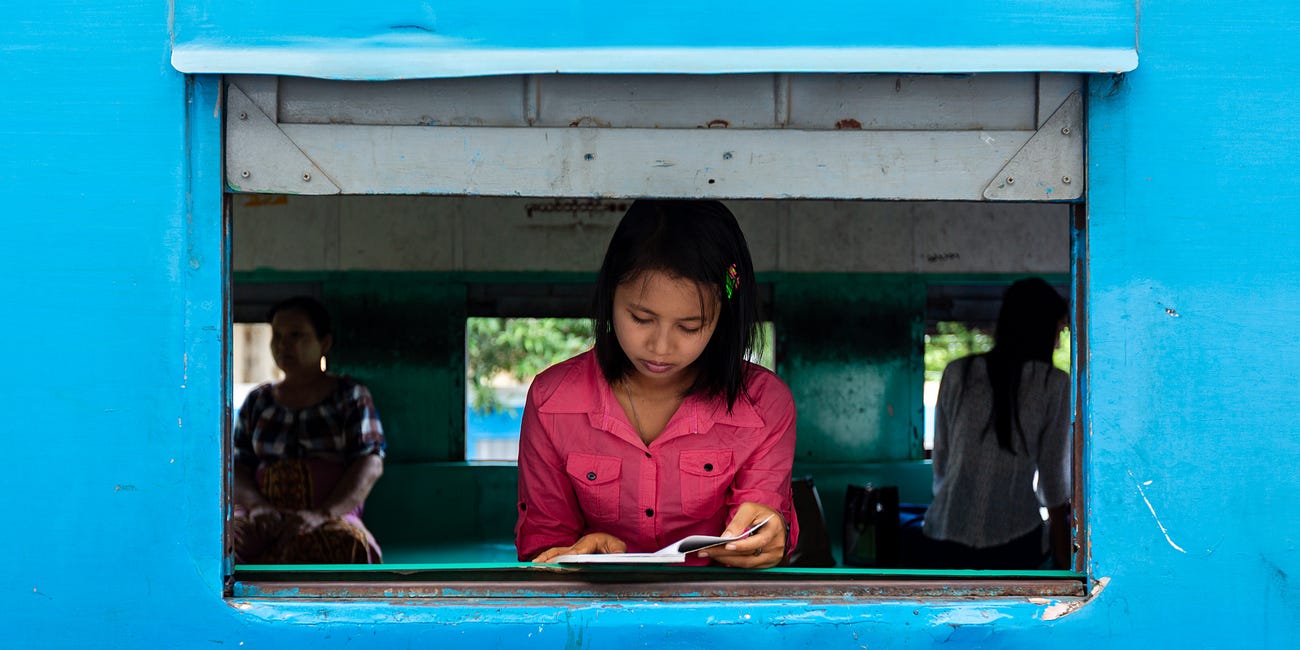
Excellent read, very interesting Bovril is better than marmite in my humble opinion :-)
FABULOUS. Keep up the good work…and enjoy the UK.